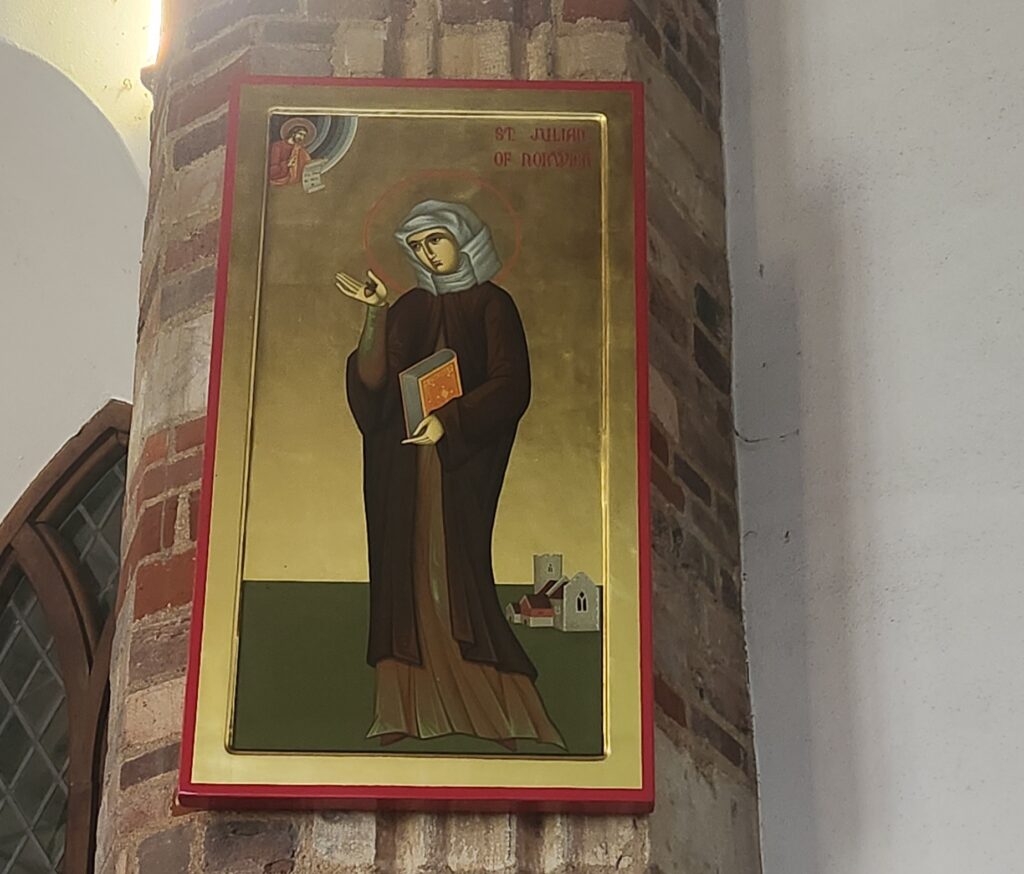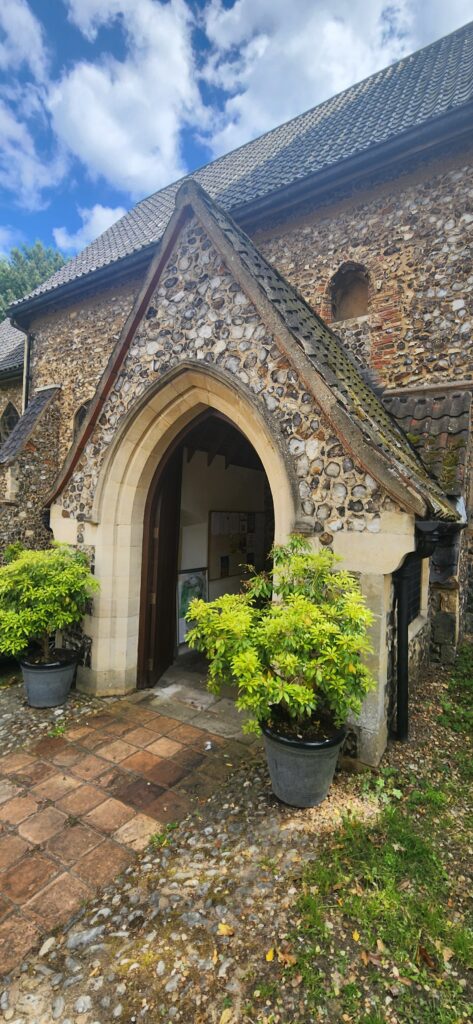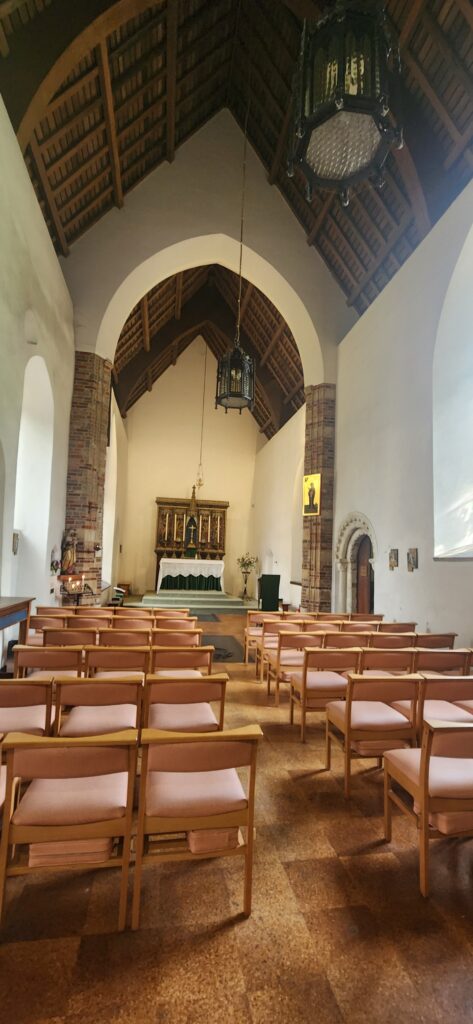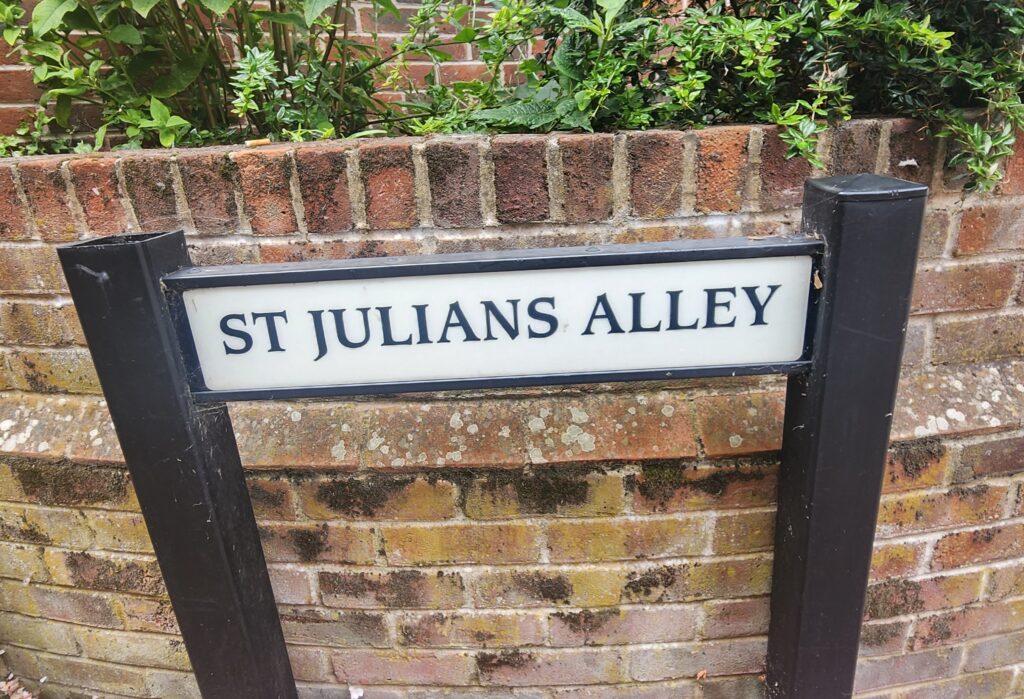St Julian’s Church is a lovely little church tucked away almost in a back street of Norwich. It was the home of a medieval nun, whose real name we don’t know, but who took on the name of ‘Julian’ on taking holy orders.
Who was St Julian of Norwich?
Not much is known about St Julian of Norwich. Historians believe she took on holy orders after losing her family to the ‘black death’ in 14th century England and lived in the church of St Julian. Despite her obscurity, however, she wrote a book entitled ‘Revelations of Devine Love’. This is a collection of mystic visions she experienced while living in St Julian’s church. It is the first surviving book written by a woman in English. St Julian is one of the most significant of England’s mystics.

We don’t know what her real name was. Julian was the name of the church before she lived there, and she took on that name on becoming a nun.
Julian was an anchorite, and Norwich was known during the medieval period for its anchorites and hermits.
St Julian, also known as Lady Julian. She is the patron saint of solitary women, writers, solitude and cats! No wonder I have had a long-held fascination with her!
About St Julian’s Church
A church existed on the site before the arrival of the Vikings, who destroyed it.
St Julian’s Church today is a Grade 1 listed building and is an Anglican Parish in the City of Norwich, UK. You can visit the church and the cell Julian lived in. When I went there, there was nobody in the church at all. However, you are free to enter and explore the little worship area and sit quietly in the cell in which she lived. There is plenty of information in the cell, which adjoins the worship area of the church.

The building itself is a small and charming church, decorated with the stones which are found on the Norfolk Coast. This is typical of many buildings. Walking from St Julians towards Norwich Cathedral, you will also find the church of St Michael with the same type of decoration.
It is uncertain whether it took its name from St Julian the Hospitaller, or Juliana of Nicomedia.
Restorations on the Building
The building started to crumble during the 19th century, and significant restoration took place in 1845 and again in 1934 when part of the building again began to collapse.
A bomb hit it during German bombing raids in World War II, and it was the only one of four churches hit in Norwich to be rebuilt.

Pilgrimage and Accommodation
St Julian’s, Norwich is a draw card for pilgrims from around the world. To support this, there is accommodation close by, at All Hallows Guesthouse. All Hallows is a family run guesthouse, which has an emphasis on environment and sustainability.
If you want a more independence, there is plenty of accommodation in Norwich, although it appears to be pricier than it used to be. I stayed in a cheap hotel near the Train Station, which is within walking distance of St Julian’s Church.
Getting There
Regular trains go to Norwich from Cambridge and London with connections to and from other major centres. A regular train between Norwich and the north coast of Norfolk. There is a bus station at the other end of town, which, although a bit further, is also walking distance from St Julian’s. plenty of local buses also service the city and go to other towns and cities in Norfolk.
The church is in St Julian’s Alley, off Rouen Street, Norwich.

Other things to do in Norwich
To make a day of it in Norwich, there are plenty of other things to see and do. Some are:
Norwich Cathedral: free entry or with voluntary donation. The cathedral is a 13th century marvel of architecture, with a cloister and even a labyrinth in the cloister.
A walk along the Yare River.
The walk along the river is a calm and serene getaway from the bustle of the city. You can see house boats, swans and other bird-life. There are also some lovely medieval bridges.
Norwich Castle: A medieval castle dating back to the time of William the Conqueror (11th century AD). Part of the castle was closed at the time of writing due to restoration work, but some galleries were still open. Check their website for further information on entry prices and opening times.
Stanger’s Hall is a well-preserved merchant’s house in the centre of Norwich, dating back to 1320.
Check the website for admission prices and opening times.
This is a famous medieval street in Norwich and a much-photographed street in autumn (with the falling leaves) and at Christmas. Visit the Visit Norwich website for more information.


